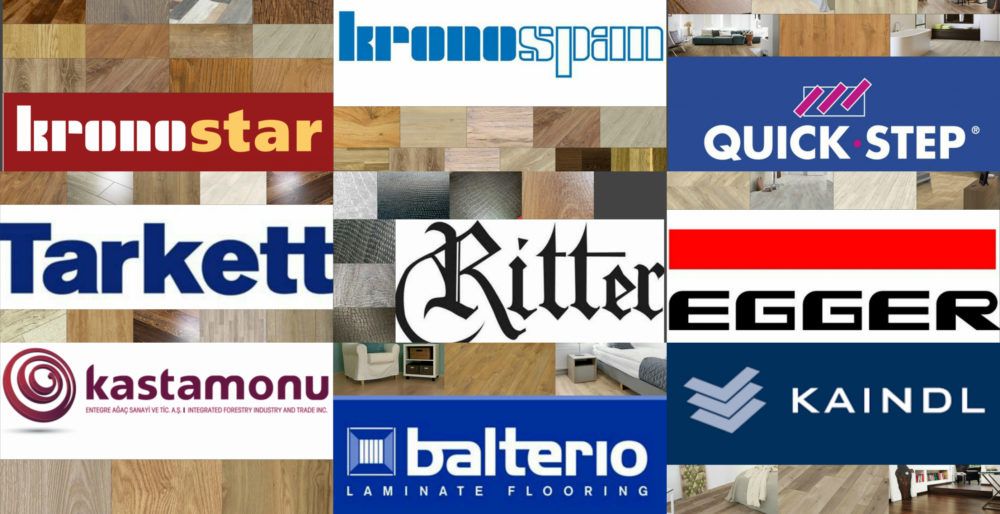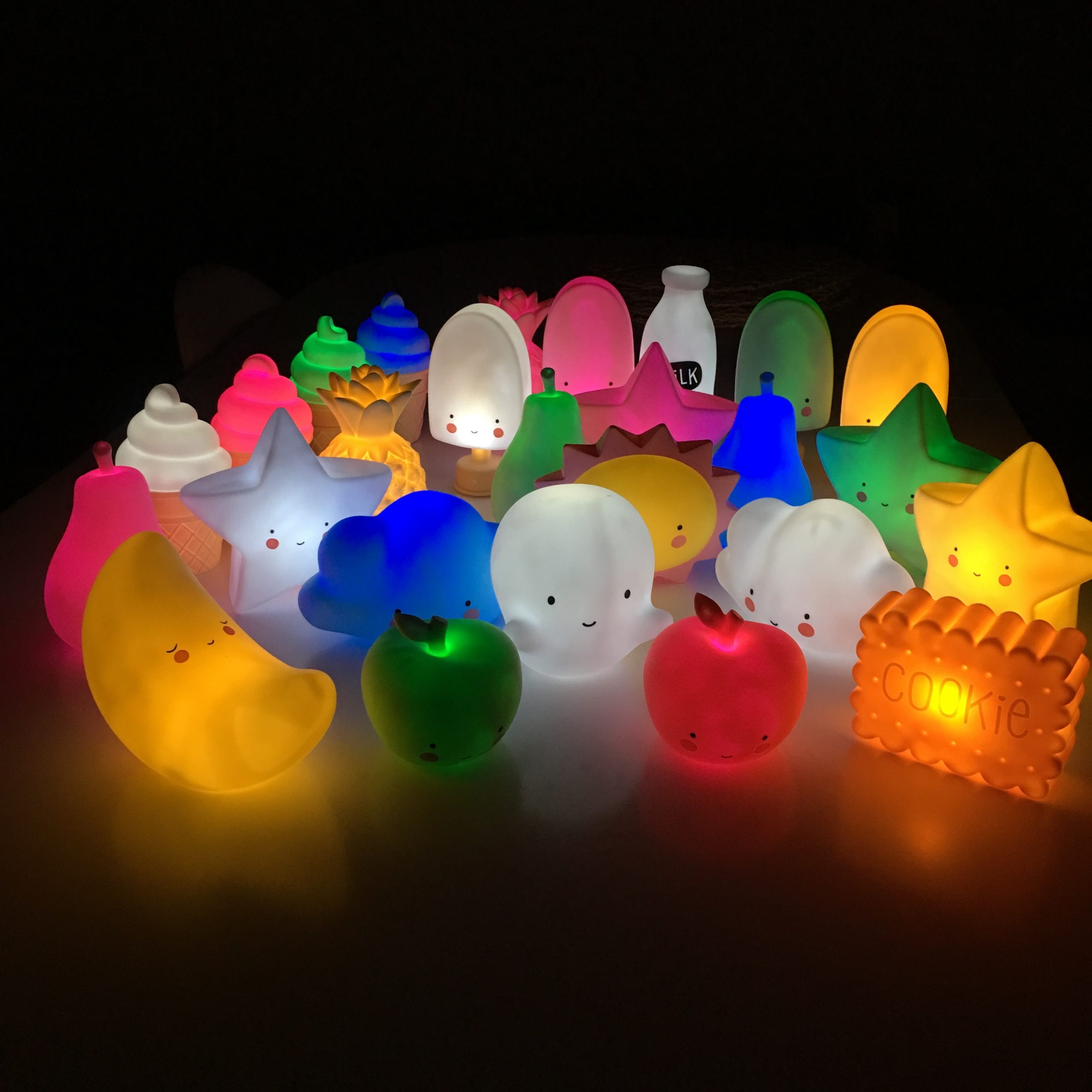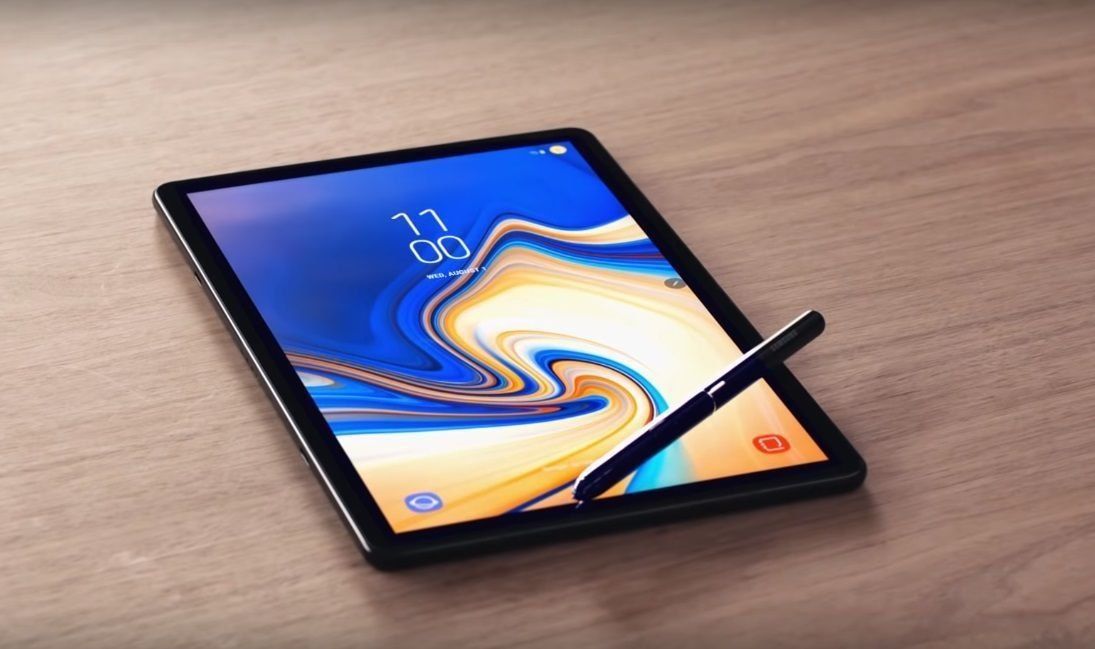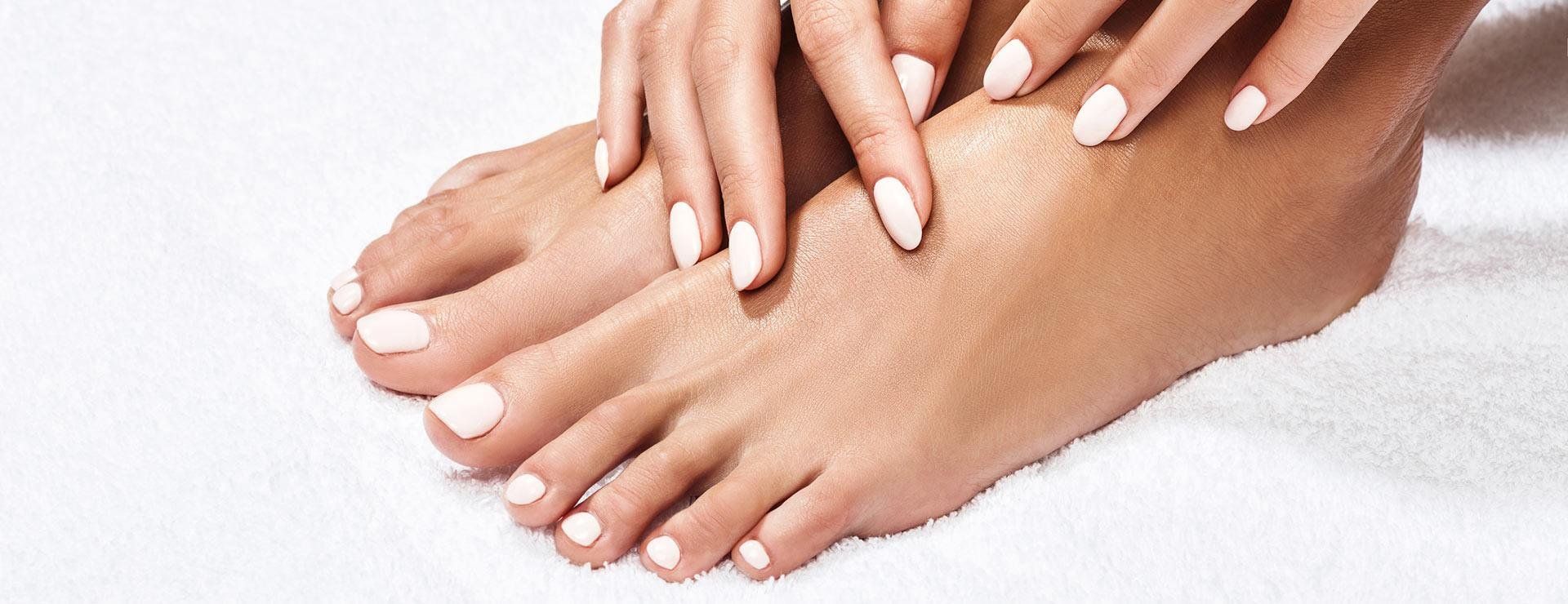Best hot glue guns in 2020
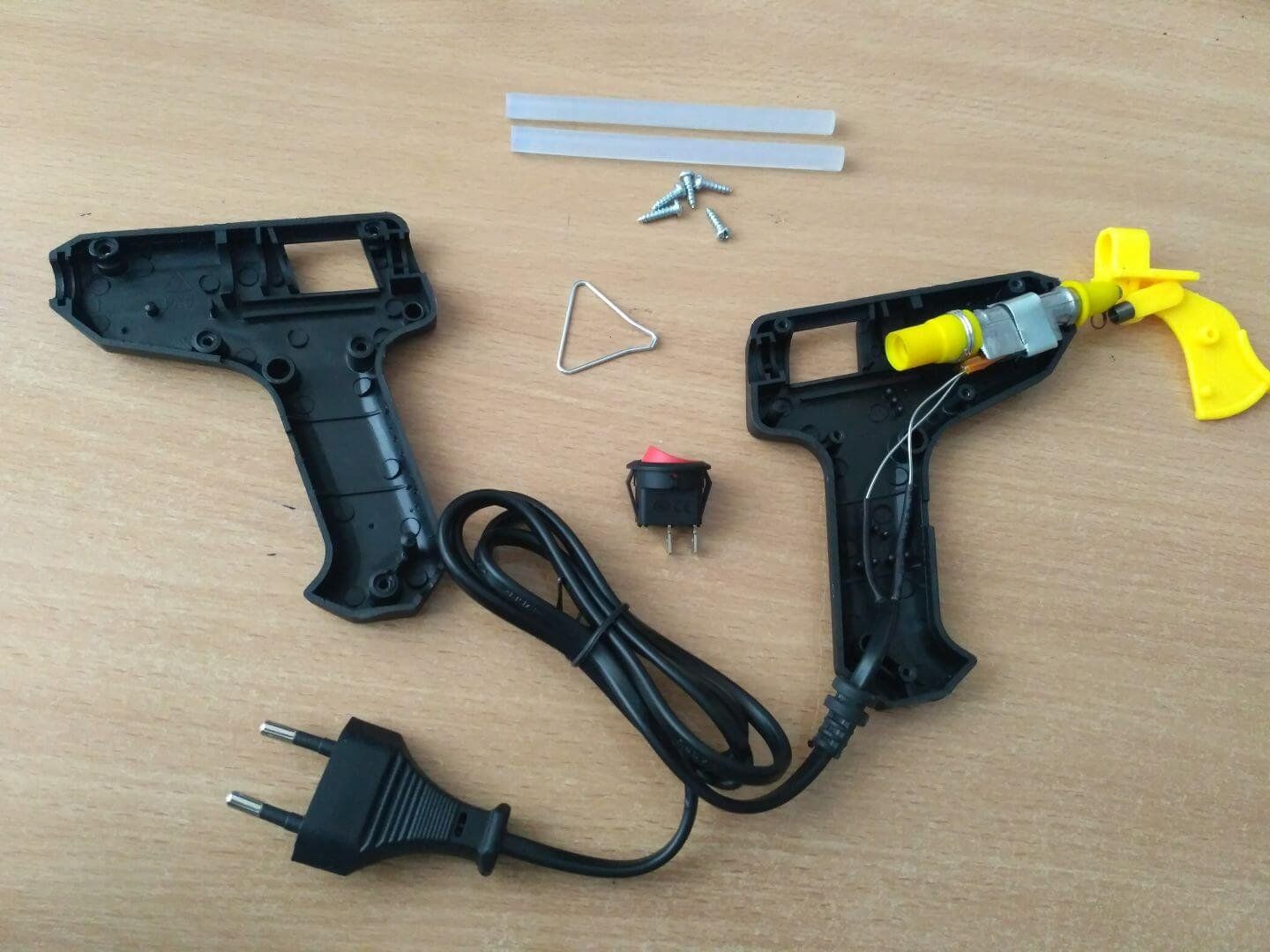
A hot glue gun is a very useful tool for the work of a professional builder, and in the hands of a home craftsman or a creative person. Installation work, minor repairs and restoration of broken or broken things, creating objects of creativity and children's crafts - all these tasks are successfully solved with the help of such a device.
Benefits of using a glue gun
- Easy to use: no special skills required to operate it
- Fast gluing;
- Durable moisture resistant grip;
- The substance used is not toxic, you can use a tool for child labor;
- Low weight of the tool;
- Pistol rods are cheaper than regular glue;
- The spot application minimizes adhesive consumption.
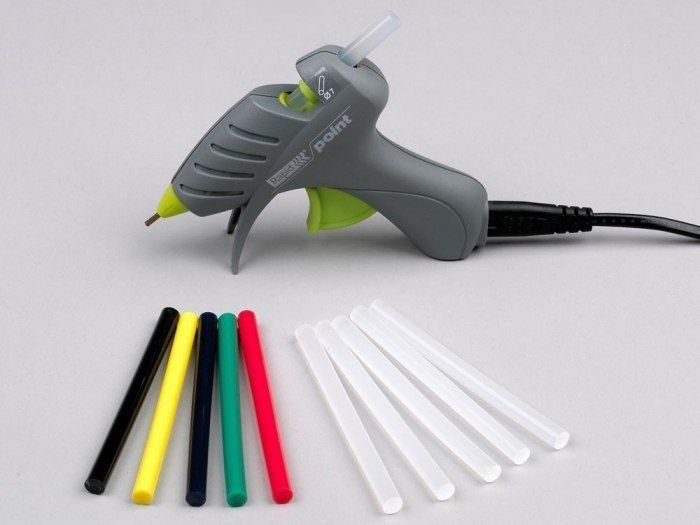
Instrument device
- Heating unit. Its components are a thermal chamber, under which there is a heating element, and a heating element.
- Nozzle. Helps to dispense glue by shaping it.
- Housing. Made of heat resistant plastic to reduce heat transfer during operation. Equipped with a special folding stand on which you can place the tool during a pause in work.
- Adhesive feeding mechanism. Fixes the rod, directing it to the heating unit, and then to the nozzle, feeds the melted glue to the surface.
- Power cord. Included with power tools. Can be detached from the case on some models.
- Switch. On some models it is located on the body. It is very convenient to use this function when you need to take a break from work: there is no need to constantly unplug the power cord from the outlet.
The glue gun is charged with cylindrical rods. Under the action of the pusher, the rod moves towards the heat chamber and begins to melt. Pulling the trigger increases the pressure in the chamber, the glue rises to the nozzle, flowing out of it.
Materials that can be fixed with a glue gun
- Plastic;
- Leather;
- Fabric (excluding fine synthetics);
- Glass;
- Paper, cardboard;
- Wood;
- Metal (preheated);
- • Linoleum.

Types of glue guns
By appointment
- Professional, used for repair and construction.
- Amateur; used for needlework, creative work, household needs. They have a lower price compared to models from the professional segment.
By energy carrier
- Gas.They work from a gas heating system, which is filled with a can of liquefied gas.
- Electrical. They are included in the mains or powered by a battery.
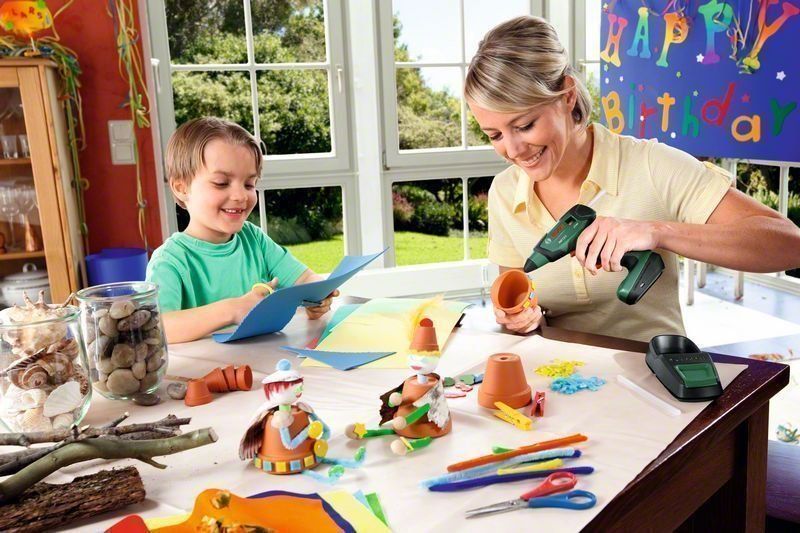
How to use the tool correctly
- Be sure to read the instructions.
- Before starting work, you need to install a glue stick in the device. This element must strictly match the dimensions of the gun. Standard diameters are 7 and 11 mm. In cases where the manufacturer recommends using only branded rods, this rule should not be neglected.
- After turning on the gun, you need to leave it for 7-8 minutes: during this time, the thermal chamber will heat up and melt the glue.
- The nozzle gets very hot, so protective gloves are a must.
- If you need to take a long break from work, the tool must be turned off and placed on a stand.
- When it is necessary to change the glue stick, the melting chamber is released from the accumulated mass in it by pressing the trigger. The chuck must not be removed by hand in order not to damage the tool.
- At the end of the work, the gun is turned off and the nozzle is cleaned of glue residues using paper or cardboard. The housing also needs to be cleaned periodically without the use of aggressive compounds such as solvents.
- The melted glue hardens very quickly, so before starting work for the first time, you should practice gluing simple objects (for example, cardboard boxes), and then move on to more complex work that requires precise and accurate application of the adhesive.
- If you need to glue surfaces made of plastic, wood or ceramics, they must first be degreased, due to this, the glue will lay better. Metal parts need to be warmed up a little for better bonding.
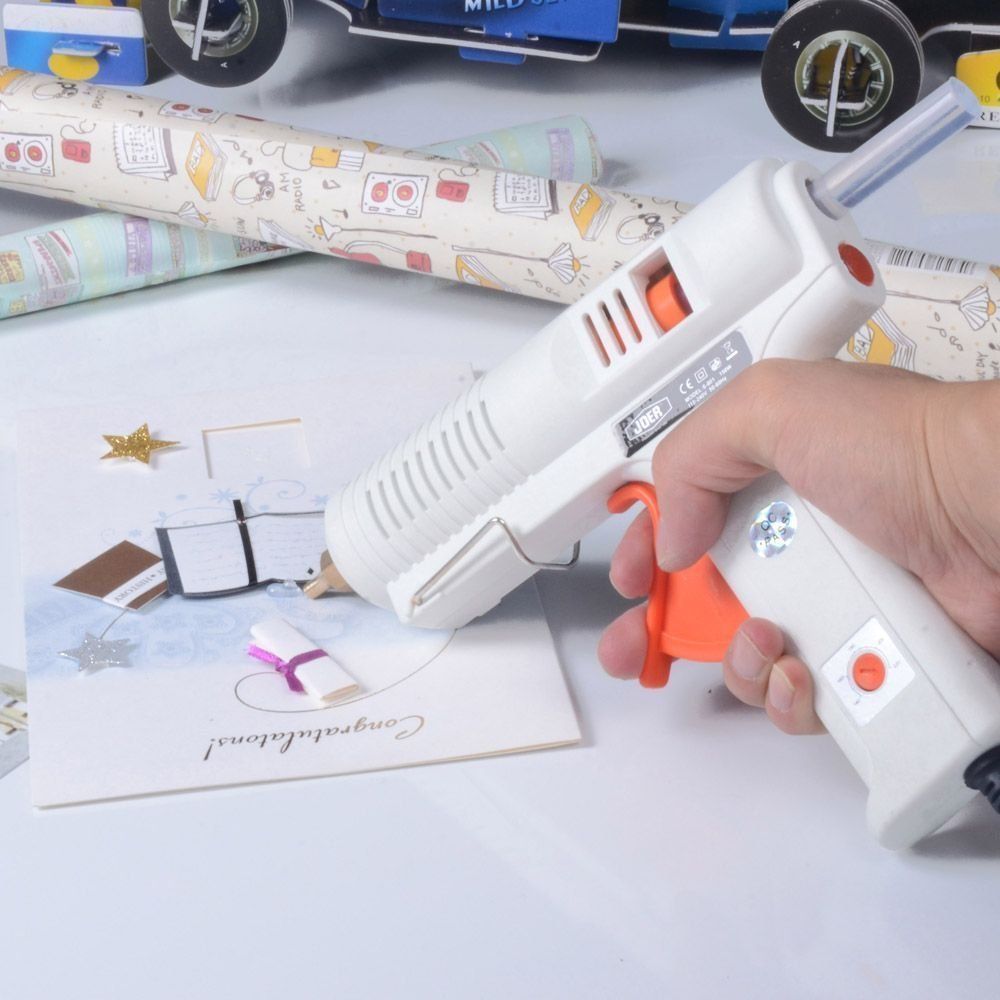
How to choose a glue gun
Main selection criteria
- Power. The melting rate of the glue directly depends on this indicator. For professional instruments, it varies in the range of 300-500 W, for semi-professional - 150-200 W, for household instruments - 30-150 W.
- Performance. The parameter denotes the mass of glue that flows out of the nozzle per unit of time. It is determined by the power of the heating element and the diameter of the rod. Professional models have higher performance than household ones.
- Working temperature. It can vary from 100 to 200˚С. If it is intended to process materials that are sensitive to high temperatures, you need to select special glue sticks (melt at 105 ° C), and the tool must function in this mode. For other materials, rods melting at 170-200 ° C are suitable. Pistols that operate in several temperature regimes are convenient.
- Temperature regulation. This option is useful for those who have been using the tool for a long time. The switch turns the gun into standby mode or turns it off altogether during long interruptions in work. There are models that have this function in automatic mode.
- Power type: rechargeable, from the mains or semi-autonomous (the power cord can be removed after heating the thermal chamber and work for another 10-15 minutes. This is convenient when you need to perform tasks at a distance from the power source).
- Glue stick diameter. For serious repair work, it is better to use a diameter of 11 mm, for intermittent operation - 7 mm.
Additional functions
- Off button;
- Lantern;
- Indicator indicating that the tool is ready for use;
- A set of additional attachments;
- Sight glass showing how much glue is left;
- Stand;
- Protection against leakage of glue droplets.
When choosing a tool, you need to determine the range of tasks for which it will be used. For repair and construction, professional models are suitable, including those powered by a battery. For creative work with paper or delicate fabric, the low temperature gun is intended.Also for delicate or foamed materials, a pneumatic thermo gun is suitable. The peculiarity of such models is that the glue is applied in the form of a spray due to pneumatic feed: small droplets of glue do not melt or deform the surface.
How much a glue thermo gun costs depends on its technical characteristics, functionality, manufacturer and brand. The price range is wide: you can purchase both a budget model for 300 rubles and a professional tool that costs more than 5 thousand rubles.
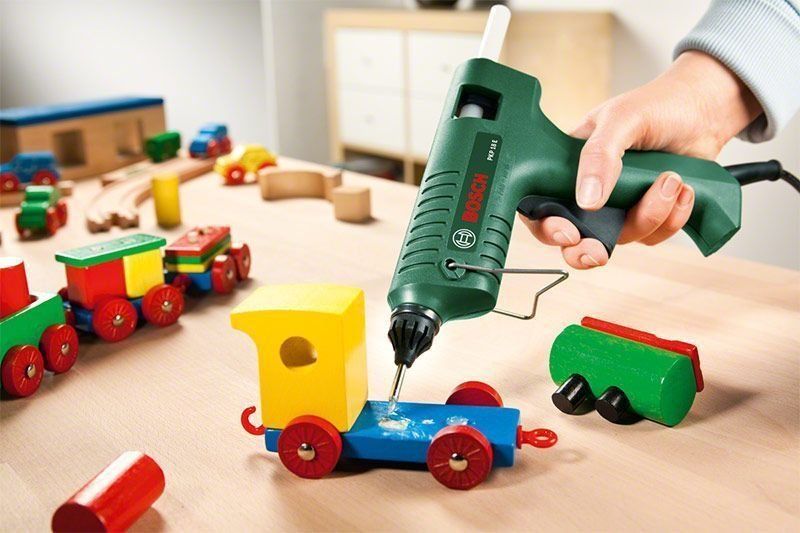
Top manufacturers
Which company is better to buy a thermal gun
- Robert Bosch GmbH (Germany);
- Dremel (USA);
- Kolner (Development - Russia, production - China);
- Steinel (Germany);
- Bison OVK (Russia).
Rating of quality glue hot guns
Best professional tools
BOSCH PKP 18 E
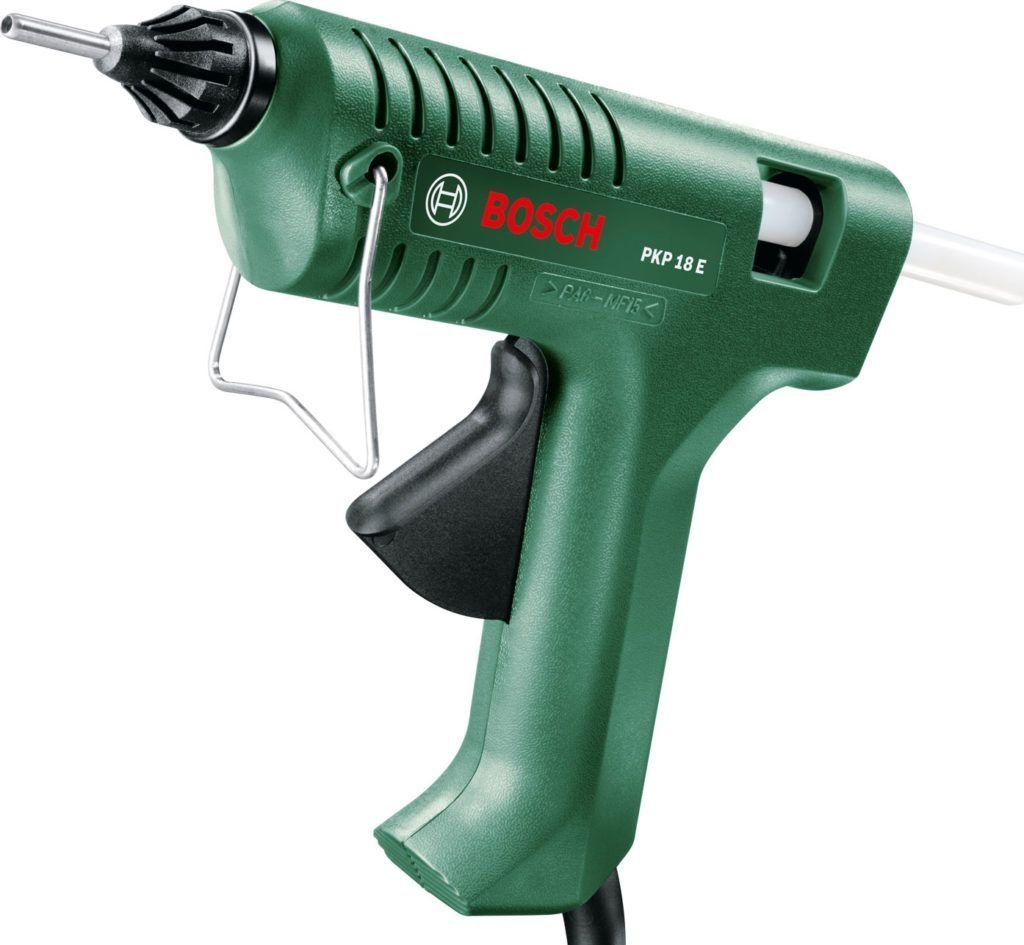
This model has excellent performance. The high-temperature (200˚C) tool heats up quickly and evenly applies the glue to the surface. Suitable for sealing and gluing various materials (wood, plastic, metal, fabric).
- Long power cord;
- The case does not heat up;
- Little weight;
- Metal tip.
- High price.
Average price: 2100 rubles.
Steinel Gluematic 3002
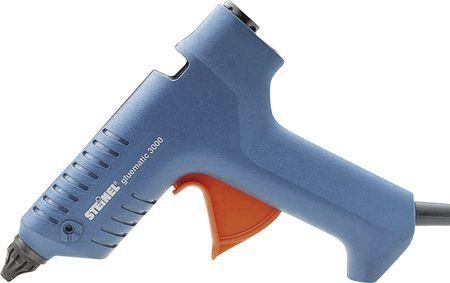
The model is distinguished by high power (220 W), its advantage is electronic temperature control. Compact and lightweight (320 g) plastic case is convenient for long-term use.
- Good performance - 16 g / min;
- There is a window to control the presence of glue;
- Valve for glue flow;
- The kit includes three glue sticks.
- No switch button on the case;
- The trigger is large, not very convenient for small work;
- It heats up for a long time - 7-10 minutes.
Average price: 1200 rubles.
Dremel 910 JC

A universal device that copes with both construction work and household tasks. Ergonomic due to its lightweight body and comfortable grip. Working temperature - 165˚ С. Suitable for gluing many types of materials.
- Lightness (weight - 200 g);
- Stand available;
- With electronic temperature control;
- Heats up quickly.
- Heavy cable;
- Branded rods are expensive.
Average price: 1100 rubles.
The best battery models
Bosch Glue Pen 0.603.2A2.020
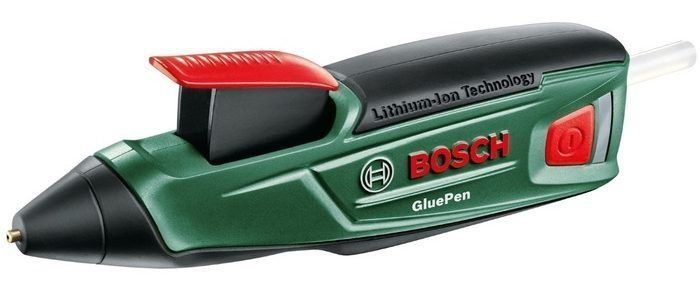
This tool has a comfortable, flat body with anti-slip rubber pads. Useful options - light indication and power button on the case.
- Battery and charger included;
- USB connector is matched with a mobile phone adapter;
- Drip protection;
- Up to 6 rods can be melted per charge.
- High price.
Average price: 2 500 rubles.
Steinel NEO 1 334 109
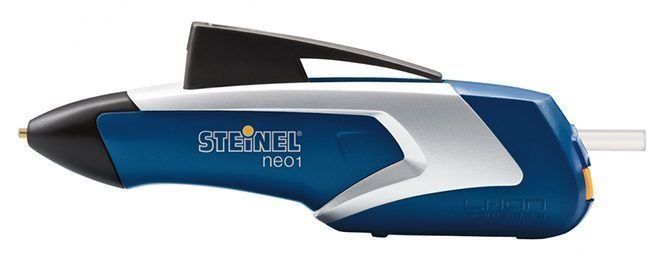
The tool is suitable for filling thin seams: its shape tapering towards the nozzle allows for the most precise application of the adhesive. One battery charge is enough for half an hour of operation.
- The presence of a power button;
- Suitable for spot work;
- Good overview of the working area;
- Compactness;
- Light weight (150 g);
- There is protection against drops;
- Automatic shutdown.
- High price;
- Only works with rods with a diameter of 7 mm;
- The battery is charged within 3 hours.
Average price: 2400 rubles.
The best models for needlework
Such heat guns are distinguished by small body sizes and rod diameters, lower cost compared to professional models and economical consumption of glue.
Masterhand
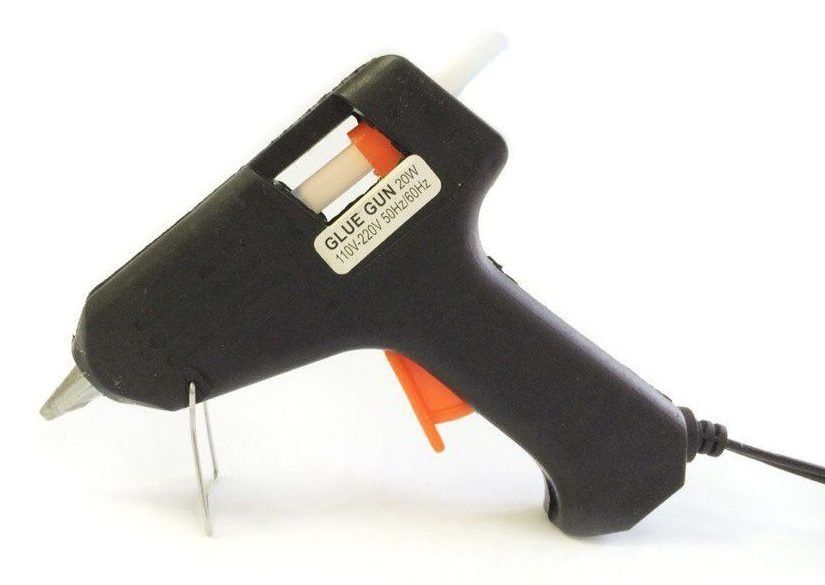
The most inexpensive tool in this segment, has good quality and copes with the tasks. Its operating temperature is 120˚C, heating takes place within 3-5 minutes. The compact device makes it easy to handle the smallest materials.
- Affordable;
- Two rods included;
- Ease of use;
- Fast heating.
- The plastic case is not of the highest quality;
- Glue may run out.
Average price: 240 rubles.
Hobby and pro DS-040
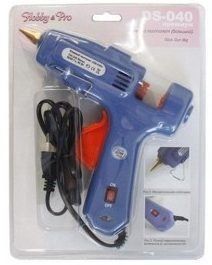
A universal model that is suitable for any kind of creative work: floristry, scrapbooking, jewelry making, decorative finishing and many others. Adheres firmly to almost all materials: wood and fabric, cardboard and paper.
- Protection against glue leakage;
- Stand for the case;
- Ergonomic shape;
- Accuracy of glue application;
- Inexpensive.
- The case heats up during operation.
Average price: 700 rubles.
The best tools for glueing rhinestones
Dremel 910 F. 013.091.0JC
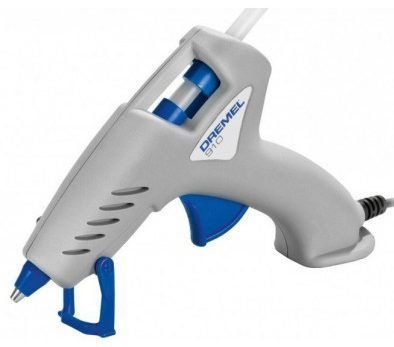
The thermal gun weighs 140 g, which allows your hands not to get tired during long work and stick a large amount of rhinestones.
- Compactness;
- Long power cord;
- Easy to use.
- The glue stick runs out quickly.
Average price: 830 rubles.
Kolner KGG
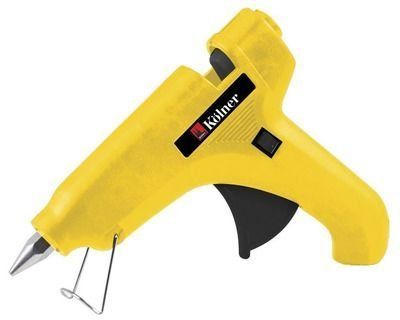
The device is suitable for working with uneven surfaces. It can be used for both creativity and repair.
- Lightweight body;
- Two sticks with glue and a spare nozzle included;
- Long cord;
- Switch and light on the handle;
- Affordable price.
- Glue may leak from the spout.
Average price: 400 rubles.
The best thermal guns for working with paper
UHU Creative
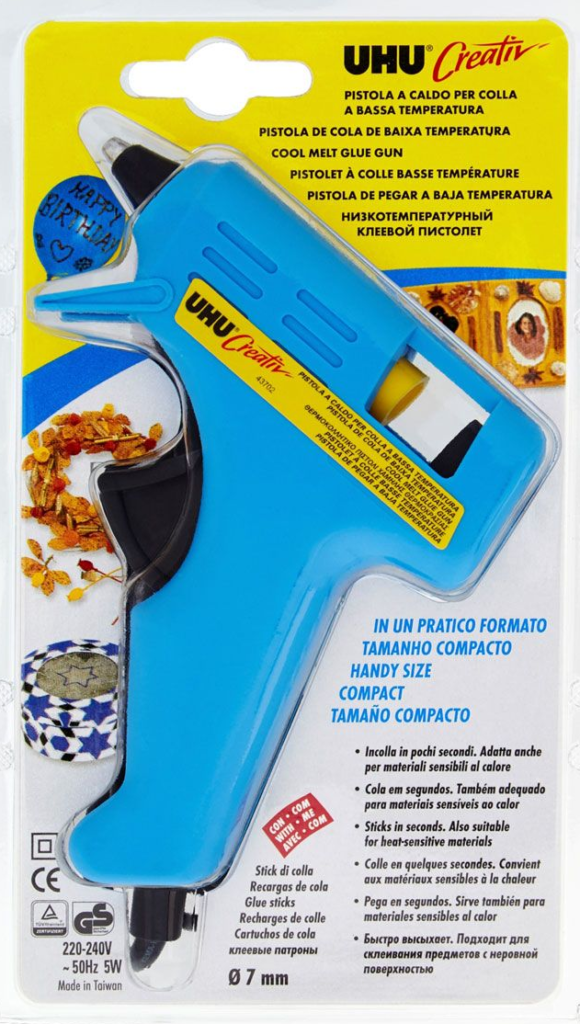
The model belongs to low-temperature guns: its working temperature reaches 110˚ C. This indicator is optimal for heat-sensitive and delicate materials, but it does not negatively affect the adhesion strength.
- Heats up for 3 minutes;
- Dries quickly;
- Bonds reliably;
- Convenience in working with small details.
- Not found yet.
Average price: 900 rubles.
Dremel 930-18 HOBBY
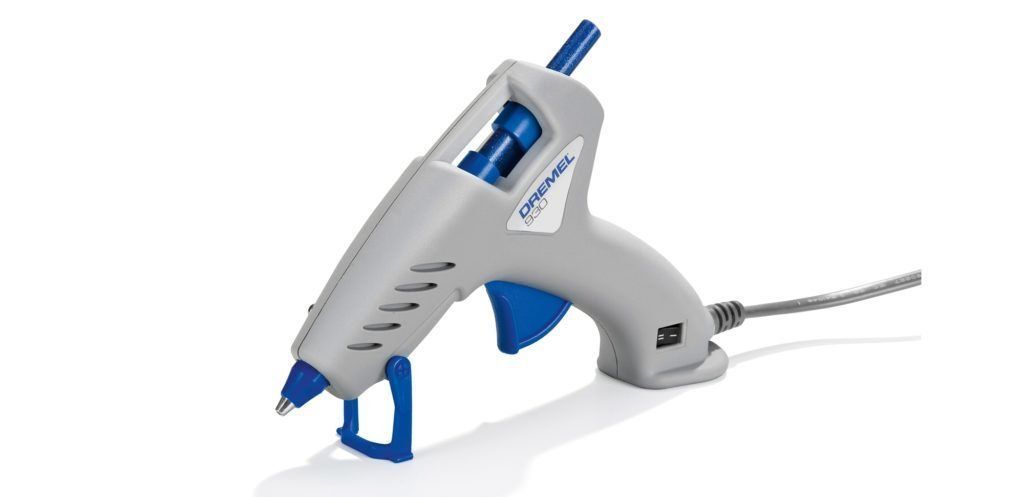
It has two temperature modes, one of which is suitable for working with paper or organza, decorating and other creative activities.
- Colored rods included;
- The case does not heat up;
- Lightweight and easy to use.
- Short cord;
- Thick nose.
Average price: 1500 rubles.
The best thermal guns with replaceable nozzles
Bosch GKP 200 CE Professional
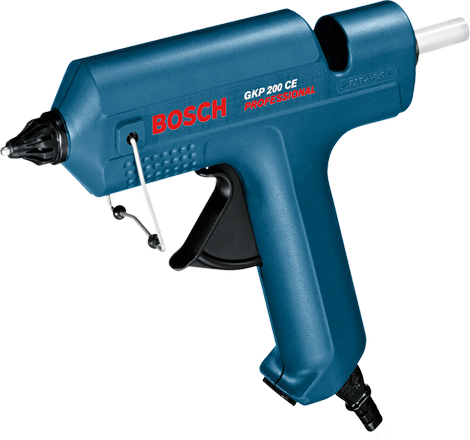
The kit includes an extended nozzle to help you work in tight spaces.
- Fast warm-up;
- Protection against spontaneous leakage of glue;
- Stand on the body;
- Wide start key.
- No switch button on the case;
- High price.
Average price: 7000 rubles.
DeFort DGG-50N-K
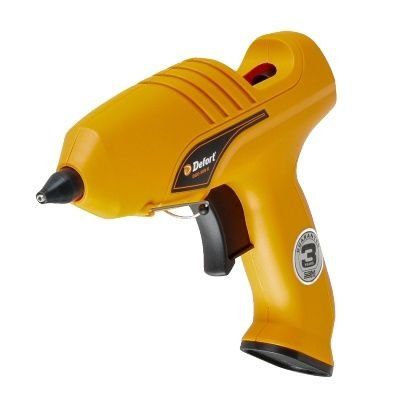
A versatile tool that can be used both for construction work and for children's creativity. The heating time of the device is 2-3 minutes. The kit includes two additional replaceable nozzles. It is possible to work with the cable disconnected.
- Good quality;
- Plastic stand and 6 glue sticks included.
- Not a very convenient storage case;
- Not cheap.
Average price: 1900 rubles.
The best tool for everyday use
Stavr PK-11/100
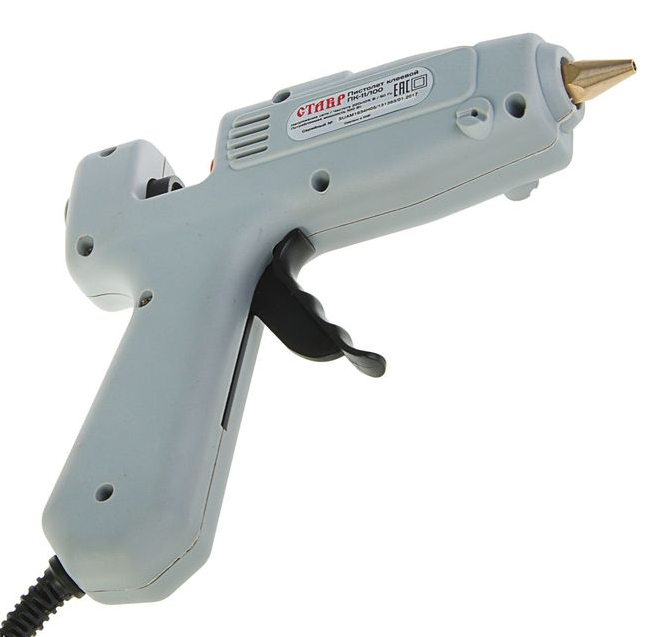
The advantages of this model for home use are its price (about 600 rubles) and ease of use. Its power is 100 watts. The technical characteristics are enough to carry out simple repairs in the house, children's creativity, gluing shoes.
- Power button on the body;
- Metal stand;
- Light weight (400 gr);
- 2 rods and nozzle are included;
- Heats up in 1 minute.
- No protection against glue drops;
- A large case is not always convenient for small work;
- There is no temperature regulation function.
Average price: 580 rubles.
The rating presents the popular models of glue heat guns and their main parameters. Focusing on the tasks that need to be completed, you can choose a functional tool for yourself at a price that suits you.
new entries
Categories
Useful
Popular articles
-

Top rating of the best and inexpensive scooters up to 50 cubic meters in 2020
Views: 97661 -

Rating of the best materials for noise insulation for an apartment in 2020
Views: 95022 -

Rating of cheap analogues of expensive drugs for flu and colds for 2020
Views: 91750 -

The best men's running shoes in 2020
Views: 87680 -

Top ranking of the best smartwatches 2020 - price-quality
Views: 85091 -

Best Complex Vitamins in 2020
Views: 84801 -

The best dye for gray hair - 2020 top ranking
Views: 82406 -

Rating of the best wood paints for interior use in 2020
Views: 77202 -

Ranking of the best action cameras from China in 2020
Views: 75269 -

Rating of the best spinning reels in 2020
Views: 74827 -

The most effective calcium supplements for adults and children in 2020
Views: 72462 -

Top rating of the best means for male potency in 2020 with a description
Views: 68296
